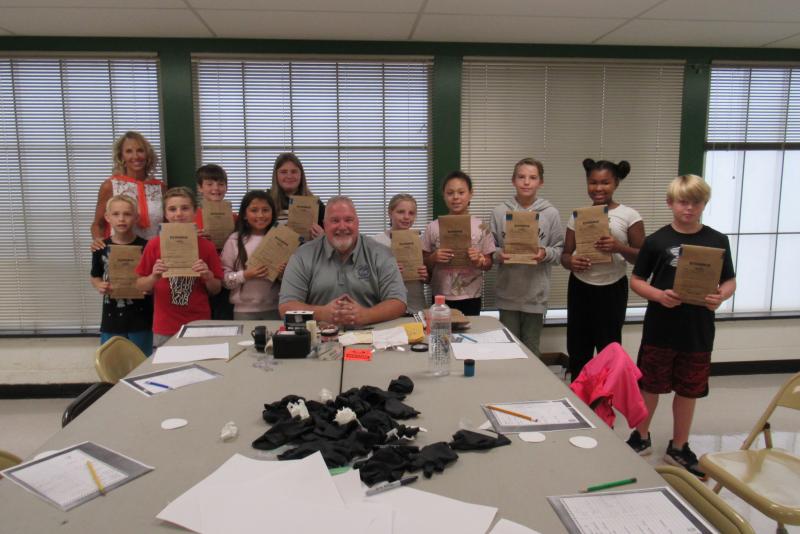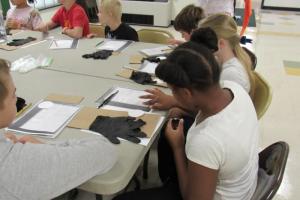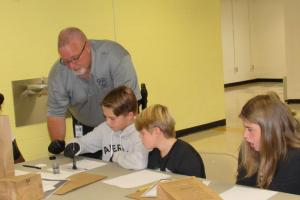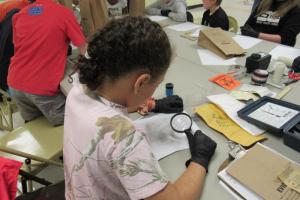Elementary students explore forensic science careers
When an overnight crime occurred at John M. Clayton Elementary in Frankford, the young detectives in the ExCEL program were hot on the case.
The mock burglary set the stage for a forensic problem-solving exercise for students in a gifted and talented class led by retired Delaware State Police Det. John Justice, who now works security for the school.
Justice, a crime scene investigator who specialized in shooting reconstructions, told students someone broke into the school through a gym window and stole laptops and other equipment. Students were tasked with collecting evidence to try to identify a suspect.
“The most important thing when collecting evidence is your own safety,” Justice said. “You can get blood, chemicals or drugs on you, so you have to use safety equipment like protective glasses, masks and gloves.”
Justice showed students how to test a stain to determine if it was blood.
“The color of blood changes over time,” Justice said. “Once you determine it’s blood, you would use swabs to collect the blood, then let it dry before you send it to the crime lab for a DNA test.”
Suspects can be identified through DNA, blood type, hair follicles, retina scans, fingerprints and video evidence, Justice said.
“No one person has the same 10 fingerprints as someone else, but fingerprints can change over time,” he said. “If you work with brick or stone, for instance, they can smooth down.”
Students first tried out fingerprinting themselves using a portable ink pad. To learn how to dust for prints, they palmed a blank sheet of paper and used a brush and magnetic fingerprint powder to find the loops, whorls and arches of their own fingerprints.
Justice showed students how to lift fingerprints using evidence tape, and how to mark and seal an evidence bag.
“You are true detectives now,” said teacher Cindy Isaacs, who teaches the Exceptional Cognitive Enrichment Learning gifted program for Indian River School District elementary students with Dawn Keenan Banks.
For at least one student, the exercise may lead to a career in forensic science.
“When I grow up, I want to be a federal agent,” smiled Lucille Eskridge.




























































